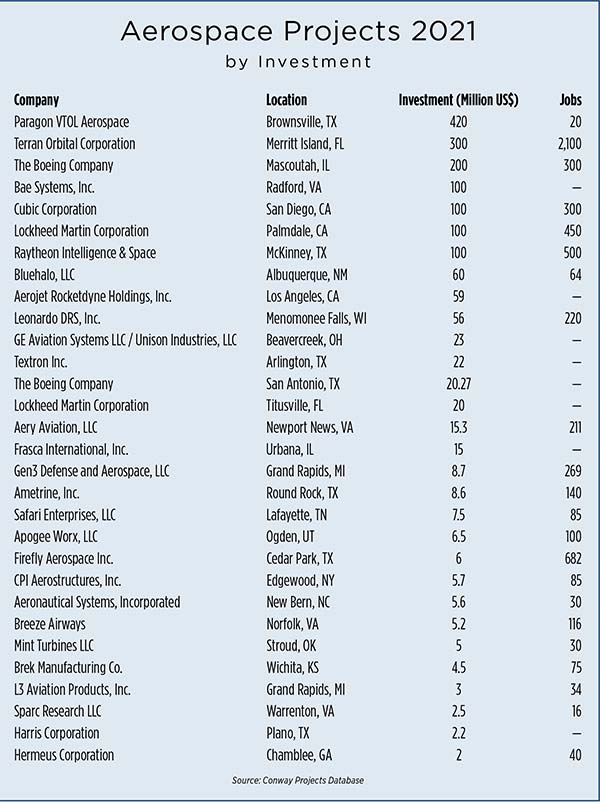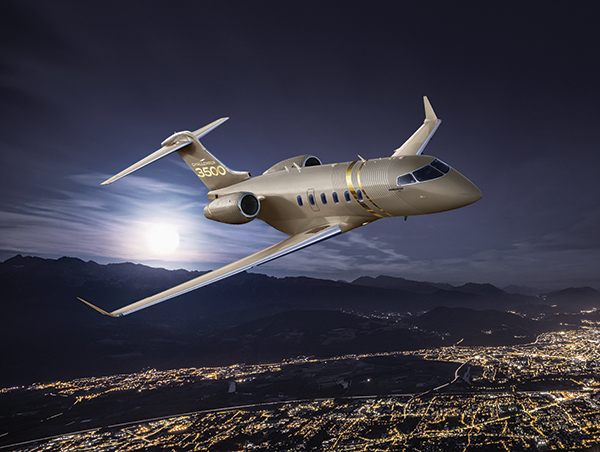Bombardier’s relocation of its Global Aircraft Final Assembly plant to the Toronto suburb of Mississauga, on property leased from Toronto Pearson International Airport, is “on track” for completion in 2023. The Greater Toronto Airports Authority, which manages the airport, says the 1-million-sq.-ft. (93,000-sq.-m.) facility is expected to create about 3,000 jobs within Pearson’s Airport Employment Zone, home to the second-largest concentration of jobs in Canada, behind only Toronto’s financial district.
Bombardier boasts that the facility will house one of the world’s “most advanced manufacturing processes” for the increasingly specialized segment of the passenger jet market it commands. Canada’s top aerospace company, Bombardier suffered COVID-19-related layoffs affecting 2,500 workers in its aircraft division in 2020 and subsequently divested itself of major assets including its commercial jet and rail operations, making it a “pure play” maker of business jets.
“We are tremendously excited at the progress we are making at the new facility,” Bombardier spokeswoman Anna Christopfaro told Site Selection in late October. Despite challenges posed by the pandemic, a new phase of construction, the company says, is to commence in late November. Spokeswoman Christopfaro declined to comment further, other than to say that a general update would be forthcoming.
Still a global leader in the business jet sector, Bombardier announced the sale of its 375-acre (151-hectare) manufacturing site in the Toronto suburb of Downsview in May 2018. Operations there have continued under a temporary lease-back arrangement.
In pulling out of Downsview, the company is turning the page on a rich chapter in Canadian aircraft history. The Downsview site had been home to the storied de Havilland Aircraft of Canada (DHC), established in 1929 with 35 people, which would eventually build the Chipmunk aircraft and the World War II-era Tiger Moth fighter. DHC was acquired by Montreal-based Bombardier in 1992.

Bombardier had signaled its intentions to leave Downsview in a statement released several months before the sale and cited in a prescient March 2018 dispatch by Site Selection Managing Editor Adam Bruns. Noting that the company was in the midst of a “five-year turnaround plan,” Bombardier lamented that it “currently uses only about 10% of a 375-acre [152-hectare] site and bears the entire cost of operating a 7,000-foot runway.”
The statement, Bruns pointed out, went on to laud the property’s “unique location, proximity to public transit, major highways, universities and shopping make it an ideal location for employment and other uses.” While Bombardier’s plans for departure initially sent shockwaves through the Downsview community, redevelopment of the strategically placed site and surrounding areas, as now envisioned by local planners, could prove to be transformative.
Mississauga is the largest aerospace cluster in the country.”
— Walter Garrison, Mississauga Advanced Manufacturing Business Integrator
Canada’s Aerospace Central
Some 12 miles (20 km.) southwest of Downsview, the much larger Mississauga, population 800,000, is characterized by a local development official as “Toronto’s Brooklyn.” Anchored by Canada’s busiest airport, it is an aerospace powerhouse unto itself. Mississauga’s Airport Employment Zone employs more than 300,000 people, and the city is home to over 40 direct aerospace manufacturers and another 140 companies that provide services to aerospace manufacturing. The nearby University of Toronto, Centennial College and Ryerson University all feature robust aerospace engineering programs.
“Mississauga is the largest aerospace cluster in the country with the largest number of aerospace employees and aerospace businesses,” says Walter Garrison, who heads up the city’s Advanced Manufacturing Business Integrator, which works directly with aerospace companies on workforce development, productivity, technology adoption, business- to-business connections, supply chains and export market development.
“We have infrastructure and we have talent,” Garrison tells Site Selection. “When you look at the manufacturers we have and you look at maintenance, repair and overhaul [MRO] and other aerospace services, it’s really impressive. And it’s very diverse, as well, because we deal with commercial and we deal with military and defense.”
Six Fortune 500 aerospace companies enjoy a presence in Mississauga. They include Pratt & Whitney Canada, whose R&D and product development operations serve the commercial and military sectors. Magellan Aerospace, headquartered in Mississauga, is a component supplier for the Airbus A380, Boeing 787 Dreamliner and F-35 Joint Strike Fighter. MHI Canada recently completed a $36 million expansion of its Mississauga operations to support Bombardier’s Global 5000 and Global 6000 business jet programs.
The expansion, said MHI Canada President and Chairman Mike McCarthy, “is the result of our continued reliance upon Mississauga’s strong business culture and its educated and energetic talent to bring us the employees that we need.”
In all, Mississauga’s deep bench of aerospace-related companies includes more than 15 that employ at least 100 workers. Among them are 3M Thermal Acoustic Systems, Cyclone Manufacturing, Pirlitor, Creation Technologies LP, Exova Canada, Field Aviation and Honeywell International.
With its sole focus now on the business jet sector, Bombardier unveiled its new Challenger 3500 in mid-September, an upscale variant of the traditional Bombardier Challenger 350.
The plane is to compete with models manufactured by Gulfstream, Embraer SA, Textron and Cessna. On September 30, the company announced an order for 20 of the new jets from an undisclosed buyer at a value of $534 million.
“Coming just days after the unveiling of the Challenger 3500, this significant order reinforces the supremacy of this platform in the super mid-size market,” said Peter Likoray, senior vice president, Sales, New Aircraft, Bombardier.
Don’t Cry for Downsview
Bombardier’s departure from Downsview has set the stage for a long-term redevelopment of the plant grounds and adjacent lands encompassing some 520 acres (210 hectares). Municipal planners envision a transit-rich, live-and-work environment to include affordable housing. Northcrest Developments was established in 2018 to master plan the site.
“The project nearly free to unfold,” reported the Toronto Star in February, “is one of North America’s largest urban development sites, as big as Toronto’s downtown core.” Land uses allowed in a framework agreed to among competing interests and jurisdictions are to include light manufacturing, research and development, media, vertical agriculture, offices and retail. Officials say non-residential development stipulated within the framework could host 20,000 to 30,000 jobs as projects unfold.
In late June, Canada’s Public Sector Pension Investment Board, which purchased the Bombardier property in 2018 for $816 million, announced a long-term lease with Hackman Capital Partners for a massive film and television production facility at the site, a planned $200 million investment.
“This plan not only will create thousands of film and television jobs, it will open the door to a new media, technology and innovation hub at Downsview that we can build upon and grow for years to come,” said Christopher Eby, executive vice president, Northcrest Developments.
Still, Downsview’s aerospace legacy carries on. Through a multi-million-dollar contribution, Bombardier is helping to support the non-profit Downsview Aerospace Innovation and Research Consortium (DAIR) in its efforts to develop a hub for innovation and training activities. A $2.5 million donation went toward the Innovation Centre, an academic and industry hub set to open in 2022 at a refurbished Moth Building, where de Havilland built the Tiger Moth.
DAIR also is a partner to Downsview’s Centennial College, which recently renamed its Centre for Aerospace and Aviation at Downsview Park, now the Bombardier Centre for Aerospace and Aviation. The Centre is home to Centennial’s aviation programs as well as its School of Engineering Technology and Applied Science’s programs in aerospace manufacturing. The four-acre (1.6-hectare) campus repurposed another part of the de Havilland building to create 138,000 sq. ft. (12,820 sq. m.) of instruction and research space.
…it will open the door to a new media, technology and innovation hub at Downsview.”
— Christopher Eby, Executive Vice President, Northcrest Developments
The $72-million project includes two aircraft hangars, as well as labs for electrical, avionics, structural components, robotics, CNC programming, engines and composites. Prominently displayed is a Bombardier Global 7500 test vehicle, donated by the aerospace company.
In a statement to Site Selection, DAIR stated, “We’re continuing with our development, and we are doing so with Bombardier as a founding member of our organization and contributor to what we’re trying to achieve with the innovation hub. While the manufacturing may be going off to Pearson, we’re still pleased to be working with them toward our goals.”

